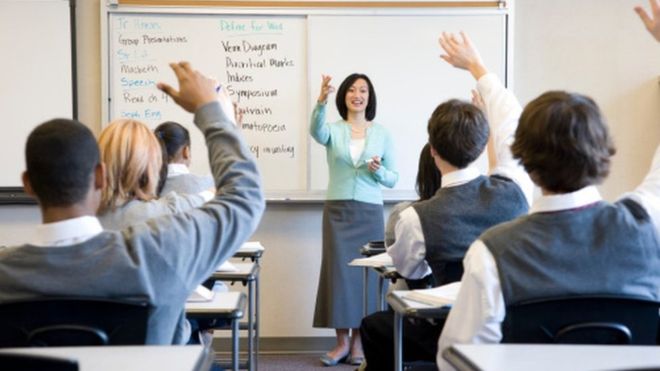Reino Unido/Febrero de 2017/Autor:/ Fuente: BBC News
RESUMEN: Algunas escuelas se habrían desempeñado mucho peor de lo que muestran las tablas oficiales de la liga si se han tenido en cuenta las «tasas de churn», se ha afirmado. Datos de la Educación DataLab muestra a unos 20.000 alumnos de secundaria que se fueron antes de asistir a sus exámenes de GCSE. Si los estudiantes se hubieran quedado, algunas escuelas no habrían anotado tanto en las tablas oficiales de la liga. De las 100 escuelas en Inglaterra que habrían visto el cambio más grande, 62 estaban en Londres. Las cifras son de 2.901 escuelas secundarias financiadas por el Estado en Inglaterra a lo largo de cuatro años. Educación Datalab, un grupo de investigación independiente, recalibró los resultados según el tiempo que cada alumno pasó en cada escuela.
Some schools would have performed much worse than official league tables show if «churn rates» had been taken into account, it has been claimed.
Data from Education DataLab shows about 20,000 secondary pupils left before they sat their GCSE exams.
If the students had remained, some schools would not have scored as highly on the official league tables.
Of the 100 schools in England which would have seen the biggest shift, 62 were in London.
The figures are from 2,901 state-funded secondary schools in England across four years.
Education Datalab, an independent research group, recalibrated the results according to how long each pupil spent in each school.
Each pupil should spend 15 terms in secondary education. For example, if a pupil spent six terms in one school, then that school would receive 40% of the results, while the other 60%.
Currently, league tables are worked out from how many children were on-roll in January of their final year.
Children may leave school because of being managed out, expulsions or moving house. They are also more likely to be from poorer backgrounds or have special educational needs.
‘Boost league table’
The figures show Harris Academy Greenwich would have seen the biggest impact on its league table position. One year it would have seen its GCSE pass rates for grades A-C drop by 15%.
In the last four years 611 pupils completed their secondary education at the school, while 217 left before the January of their final year.
Nine out of the bottom 100 were also Harris Academies.
A Harris Federation spokesperson said many of its schools joined the federation because they were failing and had a high proportion of pupils considered to be disadvantaged.
«London – which is where all of our schools are located – has high pupil mobility. It is no surprise that this would be even higher in recently failing schools with very large catchment areas and in areas of disadvantage,» the spokesperson added.
But Philip Nye from Education Datalab said there were some weaknesses in the league table system and that it could be improved by making schools accountable for all children.
«We do think in a minority of cases there might be some head teachers who are using pupil moves to boost their league table moves,» he added.
A Department for Education spokesperson said exclusions could only be issued on disciplinary grounds and that it was introducing stronger measures to ensure mainstream schools continue to be accountable for the progress of pupils they place in alternative provision.
It has not yet commented on how the school league tables were worked out.
Fuente: http://www.bbc.com/news/uk-england-london-38809805







 Users Today : 26
Users Today : 26 Total Users : 35460235
Total Users : 35460235 Views Today : 31
Views Today : 31 Total views : 3418926
Total views : 3418926